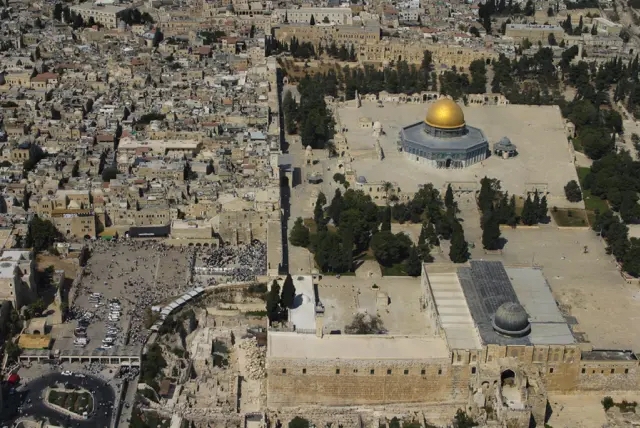On February 2nd, 1965, the Knesset revises the “Absentees’ Property Law” to allow Custodians of land owners who no longer lived in Israel, to maintain, rent or sell property previously held in a traditionalist Muslim endowment, otherwise known as a Waqf. The revision to the original 1950 law was essential for the benefit of Arabs considered to be absentee, as any benefits from these measures by the custodians were to be transferred to the original owners.
According to the law, absentees could be citizens of a neighboring nation, Palestinians who left Israel, or Israeli-Arabs who moved within Israel’s border after the U.N. General Assembly adopted its partition plan for Palestine on Nov. 29, 1947. A critical part is its clause on holy sites under a Waqf, which permitted previous owners of the lands to maintain their legal sovereignty over it. This policy has drastically impacted Israeli-Palestinian politics to this day, as the Temple Mount is considered one of the sites protected by the section regarding holy sites; meaning Israeli law prohibits any Jewish body or organization from seizing control over Al-Aqsa, even if there is no genuine intention to harm worshippers.
WATCH: Jordanian Waqf dumps garbage on the Temple Mount in front of the temple site. Desecration of the Jewish Temple Mount in Jerusalem continues in plain view. #Israel pic.twitter.com/dTQ6VE1aYz
— Eretz Israel (@EretzIsrael) August 25, 2022
It's worth noting that revision was made two years before the Six-Day War, which would de-facto put the Temple Mount under Israeli rule. The revision also came after the original 1950 law codified emergency regulations enacted during the War of Independence to deal with immovable property, enabling Israel to put the land to use, with sales proceeds meant to be provided to the absentee owners whenever Israel achieved peace with its internal and external neighbors.
Today, June 17, 55 years ago, Moshe Dayan made one of the most fateful decisions for Israel and the Jewish people - To cede control of the Temple Mount to the hostile Waqf.
— Maurice Hirsch, Adv. 🇮🇱 עו''ד מוריס הירש (@MauriceHirsch4) June 17, 2022
The time has come to rectify that disastrous decision!https://t.co/1cUfeBEggt
The 1965 revision at the time was not considered such a drastic change to the original law, as it also allowed the Custodian for Absentees’ Property to apply the same process to land people had put under Islamic endowments to provide income for their families or their communities; the intention in the revision was also to legally allow for the transferring of any profits to the former Muslim caretakers, once peace is achieved.
Despite the law being highly controversial in the Arab world, and seen as a clear attempt of seizing lands, in reality, it seeks to aid the Israeli state, while ensuring any previous rightful owners would benefit. No such law or suggested policy existed during the Jordanian rule of Jewish property in the Judea and Samaria region and East Jerusalem, and no law exists today in the PA-controlled territories, which also include countless historically Jewish lands.
On this day in 1965, The Knesset revised the Absentees' Property Law to allow the Custodian for Absentees' Property, a state office, to maintain, rent or sell property in Israel held in a waqf, an endowment created unde...https://t.co/uszrBjVTgK#IsraelEducation #IsraelEdDotOrg pic.twitter.com/VvHW5mFV5h
— Center for Israel Education (@israeleddotorg) February 2, 2021
It is also worth noting that perhaps the law came to be, among the reason stated above, to repair the wrongdoing in European post-WW2 policy that by no means attempted to retrieve Jewish lands, or profits, which were stolen by their neighbors while the Nazis were attempting to exterminate the Jewish race.


